Iowa is one of the 12 states that comprise the Midwest. Known for its “black gold” fertile topsoil, about 85 percent of the land in Iowa is used for agriculture. As the country’s top pork and corn producer, it’s no wonder that Iowa is one of the top three farmland states in the U.S. That might explain why Iowa is only the 32nd most populated state in the Union, even though it ranks 23rd for land size. However, if you are planning to move to the state, here are some of the largest cities in Iowa.
Largest Cities in Iowa by Population
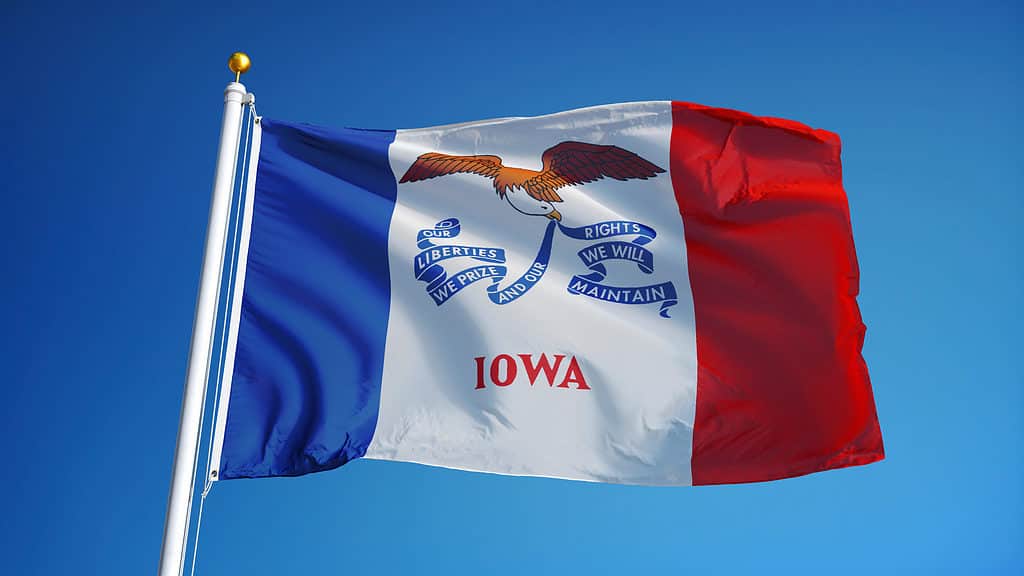
Four out of the five largest cities in Iowa have experienced a decline in population since 2020.
©railway fx/Shutterstock.com
| City Rank | Population Size |
|---|---|
| 1. Des Moines | 211,034 |
| 2. Cedar Rapids | 136,429 |
| 3. Davenport | 100,486 |
| 4. Sioux City | 85,497 |
| 5. Iowa City | 75,233 |
1. Des Moines
As the state’s capital city, it’s no surprise that this is the largest city in Iowa. Des Moines has a population of 211,034. However, this number reflects a 1.4 percent loss compared to its population in 2020, which was 214,125.
According to the United States Census Bureau, the median household income in Des Moines is $58,444. That’s below the median household income in the United States, which was $74,580 in 2022. About 15.3 percent of the city is living below the poverty line.
But the bright spot is that the cost of living in Des Moines is 14 percent lower than in the nation and seven percent lower than the state’s average. On top of that, in this crazy housing market, housing in Des Moines is 32 percent cheaper than the national average.
2. Cedar Rapids
As the second largest city in Iowa, Cedar Rapids has a population of 136,429. This number is also down 0.9 percent from the census number in 2020, which was a population of 137,723. The median household income is $63,170, and unfortunately, it’s estimated that 11.2 percent of people are living in poverty. While these numbers are a bit better than in Des Moines, the trade-off is that the cost of living is four percent higher in Cedar Rapids than in Des Moines.
3. Davenport

Declared “The Most Livable Small City in America,” Davenport is located on the banks of the Mississippi River.
©Eddie J. Rodriquez/Shutterstock.com
With a population of 100,486, Davenport is the third most populated city in Iowa. While the city saw a 1.2 percent drop in population compared to 2020, the cost of living in Davenport is three percent lower than the national average. The median household income is $56,315, which is the lowest of the top three most populated cities in Iowa. And 15.8 percent of the population are in poverty.
Davenport is home to two big universities: St. Ambrose University and Palmer College of Chiropractic. It was at Palmer College that the first chiropractic adjustment took place.
4. Sioux City
Coming in fourth by population is Sioux City, with a population of 85,497. This city has the second smallest decline rate of the five, with just a 0.3 percent drop in population compared to 2020. The median household income is higher than in Des Moines and Davenport at $59,435. Sioux City also has a lower percentage of people living in poverty than in Des Moines and Davenport, with a rate of 14.7 percent. Additionally, Sioux City is more affordable, and the cost of living is three to four percent lower in Sioux City than in Des Moines, Cedar Rapids, or Davenport.
5. Iowa City
As the fifth largest city in Iowa, with a population of 75,233, Iowa City actually grew in size since 2020. With a 0.5 percent growth, Iowa City grew from a population of 74,823 in 2020 to the current number. The median household income is $51,925, which is the lowest of the five most populated cities in Iowa. Also, an estimated 26.8 percent of the population lives in poverty. One contributing factor may be that the cost of living in Iowa City is four to seven percent higher than in Des Moines, Cedar Rapids, Davenport, or Sioux City.
The Largest Cities in Iowa by Land Area
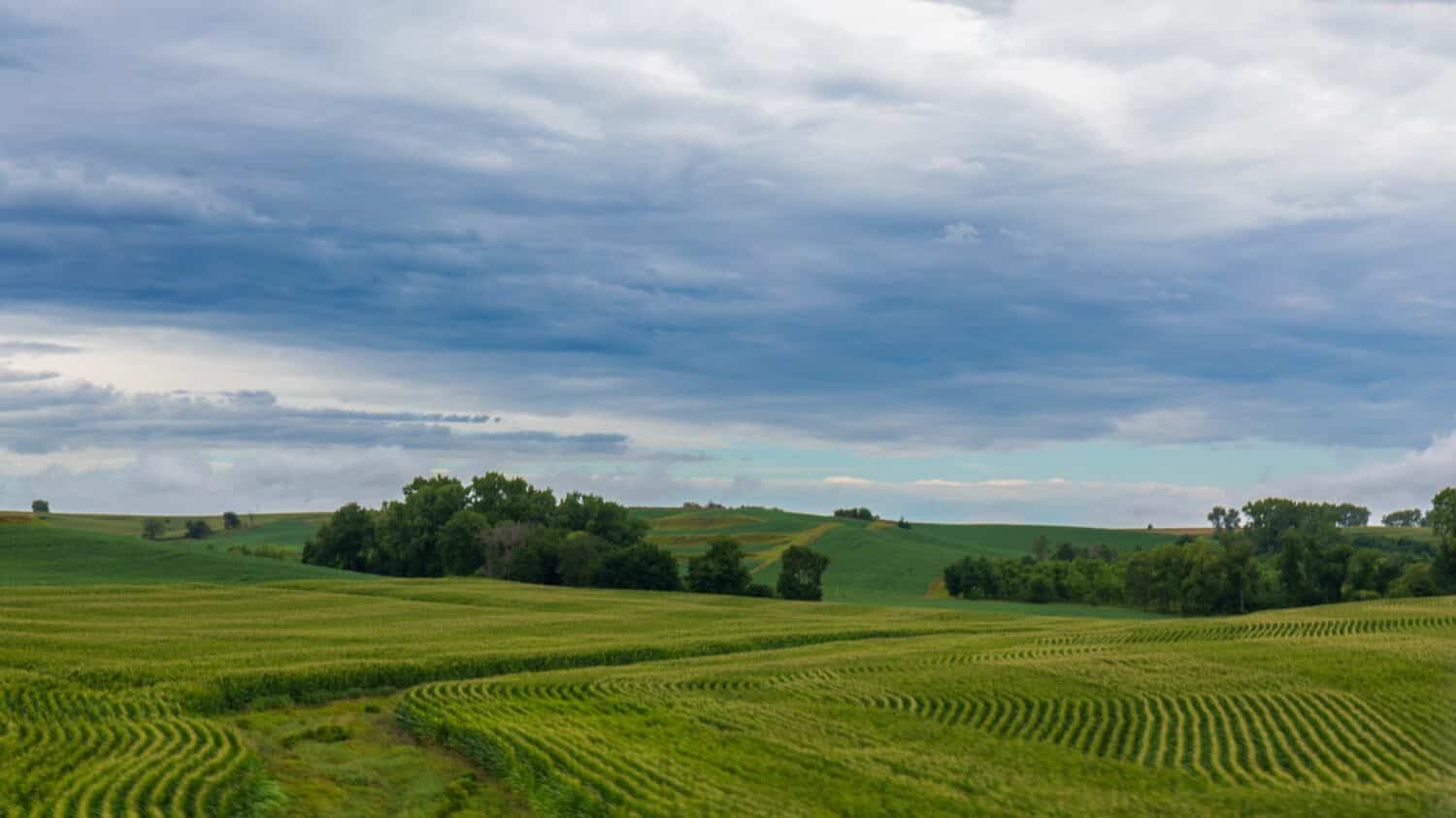
Iowa has 56,273 square miles of rolling hills and farmland.
©Rexjaymes/Shutterstock.com
| City Rank | Land Area |
|---|---|
| 1. Des Moines | 80.87 Square Miles |
| 2. Cedar Rapids | 70.80 Square Miles |
| 3. Davenport | 62.95 Square Miles |
| 4. Waterloo | 61.39 Square Miles |
| 5. Sioux City | 57.35 Square Miles |
1. Des Moines
As the largest city in Iowa by population and by land area, Des Moines is 80.87 square miles in size. Situated on the Des Moines River, Des Moines experiences hot, humid summers with temperatures averaging in the mid-70s to mid-80s (Fahrenheit). The winters are cold and snowy, with temperatures ranging from the mid-20s to mid-30s (Fahrenheit). Des Moines sees 26 inches of snow typically in a year from October to April.
Being the state’s capital, many people frequent the capitol building when visiting. But Des Moines is also the home of the Iowa State Fairgrounds, the Science Center of Iowa, and Adventureland Park, which has over 100 rides and attractions.
2. Cedar Rapids
Holding the rank for the second largest city in Iowa measured by population and land area, Cedar Rapids is 70.80 square miles in size. Furthermore, it certainly puts that land to good use as the largest corn-processing city in the world.
With a similar climate to Des Moines, the summer temperatures rarely get above 92°F. And the snowy, windy winters don’t typically go below -6°F. The amount of snowfall Cedar Rapids sees a year is quite variable, but the snowiest month is usually December, with an average of 4.5 inches of snow.
Within Cedar Rapids resides almost 300 different manufacturing plants and two dozen Fortune 500 companies. Some recognizable names include Collins Aerospace, AEGON, General Mills, Quaker Oats, and Nordstrom.
3. Davenport
Not only is Davenport Iowa’s third largest city by population but also by land area. At 62.95 square miles, that’s about nine-tenths the size of Washington, D.C. Davenport is also the largest city that borders the Mississippi River that has no permanent flood wall or levee. Consequently, the city often appears in the news as seasonal flooding from the Mississippi damages Davenport. However, residents value the unhindered access to the river for parks and recreation.
In the summer, Davenport typically experiences an average temperature of 76°F. In the winter, temperatures hover around 23°F, and usually don’t go below zero degrees. Also, Davenport sees 28 inches of snow on average annually.
Davenport is also home to many famous Fortune 500 companies such as Kraft Heinz, Sterilite Corporation, Nestle Purina, Sears Manufacturing, and John Deere. The city also has many bike trails, parks, and outdoor music. Plus, major cruise lines like Viking Cruise Lines or American Cruise Lines dock at Davenport.
4. Waterloo
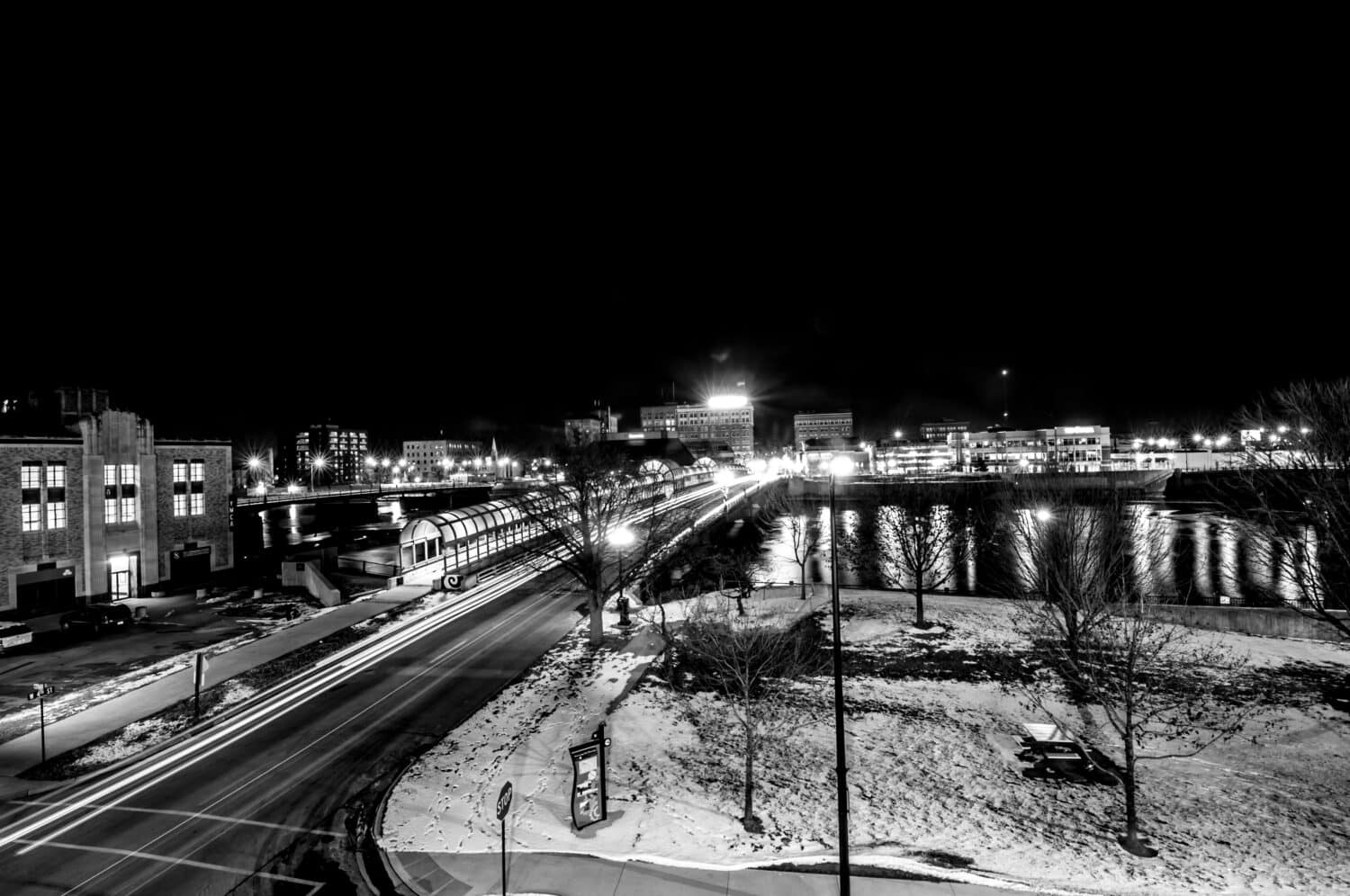
Waterloo is the hub for government, advanced manufacturing, healthcare, education, employment, and retail.
©Amdizdarevic/Shutterstock.com
Although not one of Iowa’s top five cities according to population, Waterloo is the fourth biggest city by land size, which is 61.39 square miles. Throughout the year, the temperature typically varies from 13°F to 79°F. The snowiest month for Waterloo is in January, with an average snowfall of 5.4 inches.
Waterloo has the John Deere Tractor & Engine Museum as well as the Riverloop Amphitheater, which is a gorgeous performing arts stage on the Cedar River. Also, the Lost Island Waterpark in Waterloo is one of the highest-rated waterparks in the country.
5. Sioux City
While this may be the fourth most populated city in the state, Sioux City is only fifth for land size. At 57.35 square miles, Sioux City is about one and a half times as big as Disney World. Over the year, the temperature typically varies from 13°F to 86°F. It’s usually snowy in Sioux City between November and April, with the snowiest month being December, with 3.1 inches typically.
In Sioux City, you can check out the Lewis & Clark Interpretive Center, which is an animated and interactive experience of the journey, as well as Stone State Park, which has more than 1,000 acres for hiking and camping.
Largest Cities in Iowa by Economic Impact

In 2022, the real gross domestic product (GDP) of Iowa was about 177.09 billion U.S. dollars.
©Dmitry Demidovich/Shutterstock.com
According to numbers taken in 2021, the cities with the highest Gross Domestic Product (GDP) annually are as follows:
| City Rank | GDP (In Millions of U.S. Dollars) |
|---|---|
| 1. Des Moines | 61,171.285 |
| 2. Davenport | 24,603.801 |
| 3. Cedar Rapids | 16,853.623 |
| 4. Iowa City | 11,989.228 |
| 5. Waterloo | 11,197.979 |
1. Des Moines
As the largest city by population, land area, and economic impact, the GDP of Des Moines is 61,171.285 (Million U.S. dollars). With a high concentration of agricultural and biotech companies, Des Moines is also the data center of big tech companies like Facebook, Apple, and Microsoft. Its convenient location in the center of the state and easy access to infrastructure make Des Moines the largest city in Iowa as far as economic impact.
2. Davenport
As the second largest city by economic output, Davenport had an annual GDP of 24,603.801 (Million U.S. dollars). As mentioned earlier, it is home to several successful Fortune 500 companies and is a convenient port city. With that many manufacturing and employment opportunities in one city, it’s no wonder Davenport ranked second in GDP.
3. Cedar Rapids
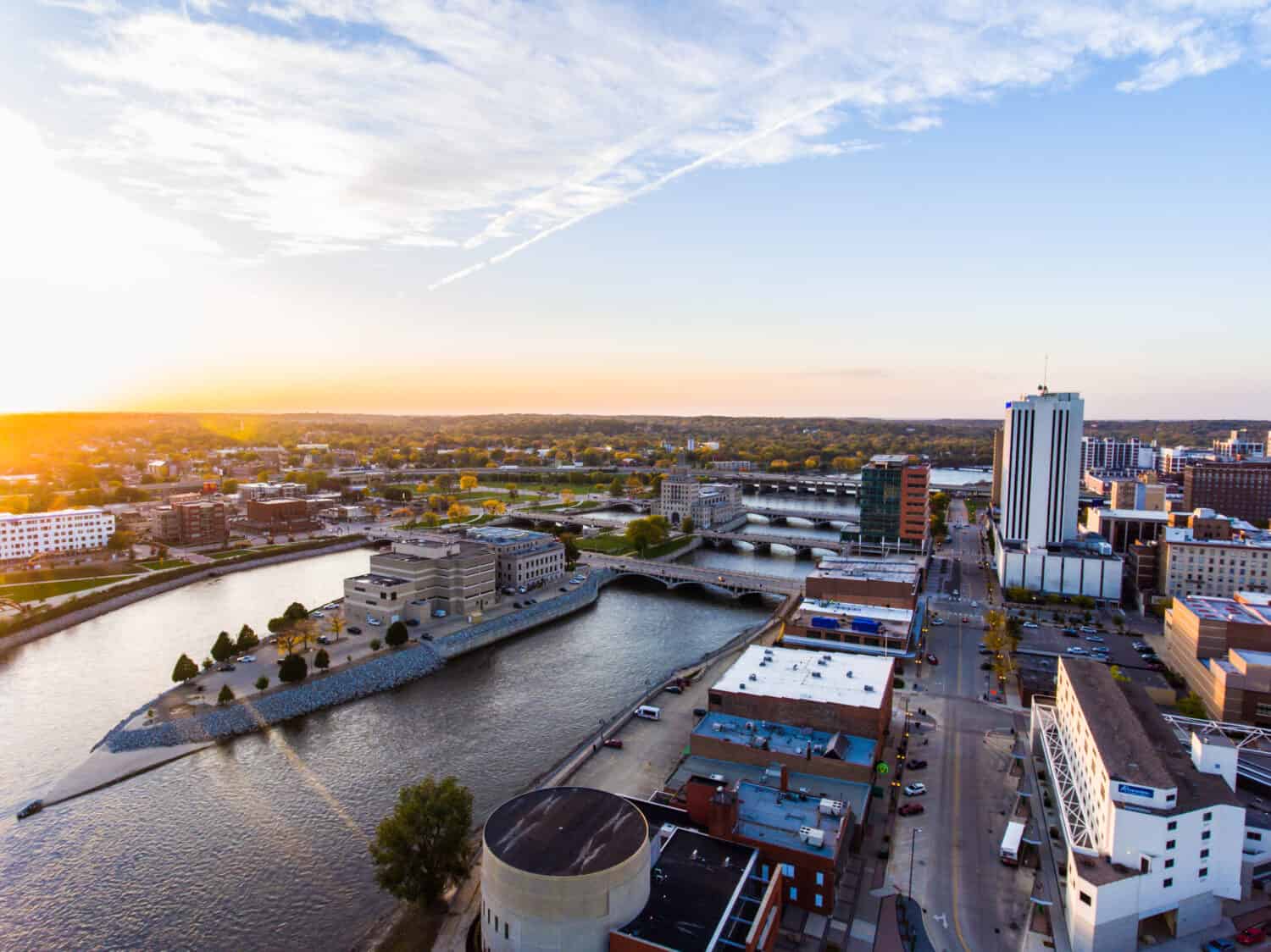
The healthcare industry is the largest employer in Cedar Rapids and is expected to grow in the coming years.
©Jonathannsegal/Shutterstock.com
Third in economic output, Cedar Rapids GDP sits at 16,853.623 (Million U.S. dollars). As the largest corn-processing city in the world, Cedar Rapids is huge for agricultural production. Also home to a few dozen Fortune 500 companies, pharmaceutical and chemical manufacturing is prevalent in Cedar Rapids as well.
4. Iowa City
With a GDP of 11,989.228 (Million U.S. dollars), Iowa City has the University of Iowa, which is one of the top universities in the nation for writing programs. The city has a reputation for hosting some famous writers and artists over the years, such as Flannery O’Connor and Frank Conroy.
A big tourism city, Iowa City hosts many festivals, concerts, Big 10 sporting events, and more.
5. Waterloo
With a GDP of 11,197.979 (Million U.S. dollars), Waterloo has many job opportunities with well-known companies. Home to John Deere, Black Hawk Financial Services, and Cedar Valley Hospital & Clinics, Waterloo is a big manufacturing city. Also, Hawkeye Community College draws many with its affordable tuition rates.
Conclusion
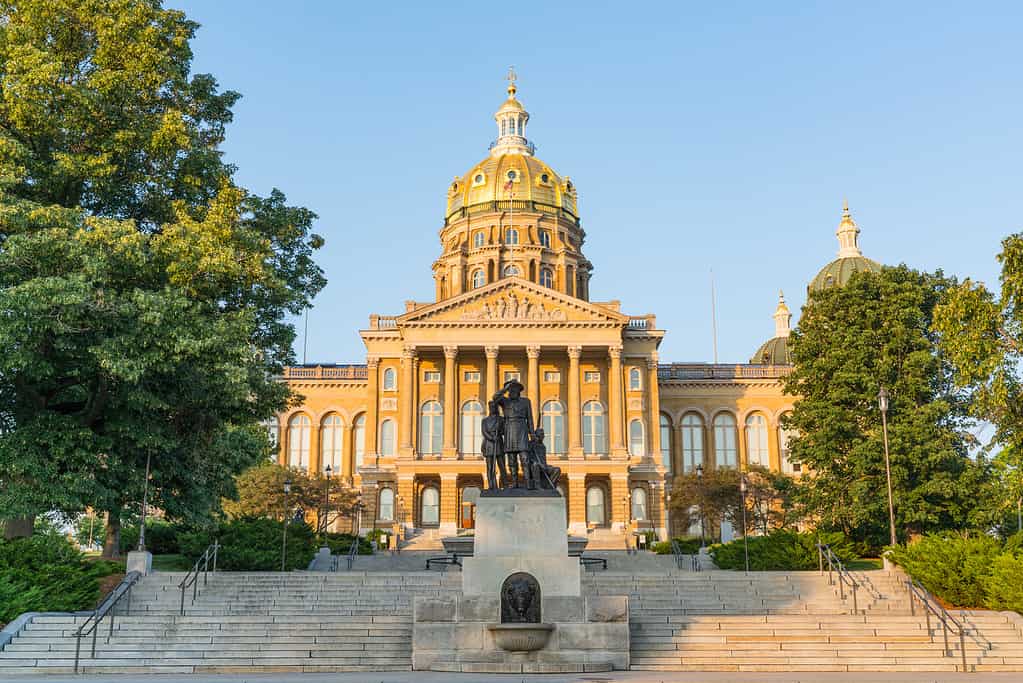
Iowa has a rich history, productive agriculture, and a Midwestern culture.
©pabradyphoto/iStock via Getty Images
The top three largest cities based on population, land area, and economic impact are Des Moines, Cedar Rapids, and Davenport. Des Moines is incredibly important as the state’s capital and center for governmental processes. Cedar Rapids is the top agricultural-processing city and is the epicenter of Iowa’s agricultural success. The port city of Davenport is the heart of Iowa’s manufacturing achievement with big companies such as Kraft and John Deere. All of these cities contribute to Iowa having the 31st highest GDP in the United States.
The photo featured at the top of this post is © Suzanne Tucker/Shutterstock.com
Thank you for reading! Have some feedback for us? Contact the AZ Animals editorial team.







